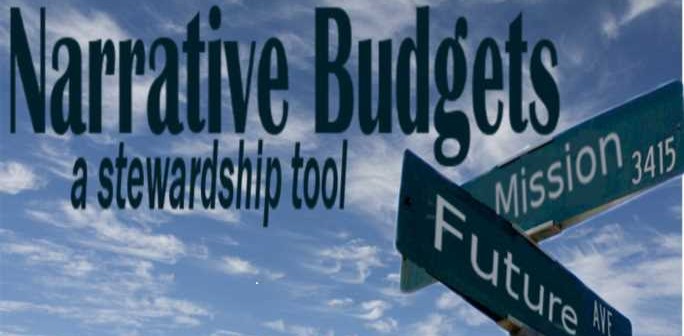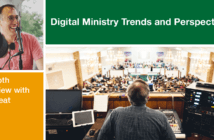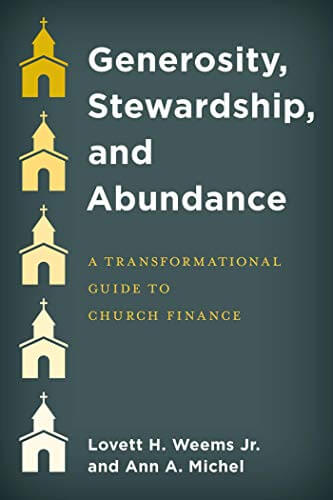Narrative budgeting has a critical role to play in any comprehensive parish stewardship program. Basic philanthropic theory indicates that people want their money to have an impact. Narrative budgeting is the best tool I have found to demonstrate to donors how their money and time are filtering through the church to touch the lives of people in need.
We make the mistake of assuming that others are as knowledgeable as we are about what the parish is doing in the community.
The basic assumption behind narrative budgeting is that donors are reluctant to give money to operating budgets when they do not have a clear indication of how their donation is making an impact in people’s lives through the ministry of the parish. The traditional line-item budget is a good accounting and planning tool, but a terrible marketing tool to motivate donor investment in ministry.
Think of your own motivation to give. Are you inspired by the fact that your donation is funding the postage meter and photocopier? Do you get all tingly inside knowing your donation will help pay for heat and electricity? Most donors can’t get excited about giving to administration and fixed overhead expenses. Sure, they know these expenses are a necessary component of running a parish, but they certainly don’t want to think about them.
Getting started
Narrative budgeting looks first at the various ministries of the parish and then assigns all anticipated expenses to key areas of ministry. In most parishes it is relatively easy to designate several areas and then begin to allocate expenses against these areas — for example, worship, pastoral care, outreach, Christian education and formation, evangelism and hospitality, and fellowship and inreach. However, each parish is unique, and these categories may not be exactly appropriate for your parish. You may decide, for example, you need a separate category for youth and children’s ministry. But experience has shown that six categories make an ideal number to help people understand the ministry of their parish.
There should be no category titled administration. That would be counter to the very essence of narrative budgeting. We want to reframe the way people think. We want them to clearly understand their faith community and its mission from a faith perspective.
After the categories have been determined, a small group sits down and talks about allocating all the line items in the operating budget to each of the categories of ministry. Some items are easy to allocate. The choir director’s salary fits perfectly in the worship category as do the costs of candles, hymn books, communion wafers, Sunday bulletins, and miscellaneous altar guild expenses. But many areas of work are not clearly delineated. You will need to ask your paid staff to track their activities for a month to get a sense of how they allocate their time against the categories. If the pastor spends 20 percent of her time in pastoral care, allocate 20 percent of her salary and benefits against the pastoral care category. The allocation of time against these categories provides a blueprint for allocating other overhead expenses such as heat, electricity, phone, and parsonage expenses.
Don’t burden yourself with over-worry about accuracy. Be as correct as you can be, but understand that the narrative budget is a snapshot of parish activity and a marketing and educational tool. Its purpose is to help the donors appreciate and become more aware of how their money is ultimately affecting people’s lives and making an impact. It is not an accounting tool.
Telling the story
In your narrative you will need to explain the details of each of the ministry categories. You can outline each program and help people understand how it works. Often when we are heavily involved in the ministry of a parish, we make the mistake of assuming that others are as knowledgeable as we are about what the parish is doing in the community. A common response from parishioners is that they were unaware that the parish was doing so much in the individual categories of ministry.
After first telling the story of the specific ministry, you then proceed to make it much more personal. Tell the story of specific individuals touched by the ministry. For example, the story of an inmate in a local correctional institution touched by your prison ministry. Or the story of an elderly parishioner served by your pastoral care network. These sacred stories of the parish’s ministry to real people resonate at deep levels with what we are supposed to be about as faithful Christians.
It is very important to distribute the narrative budget in booklet form with the annual stewardship mailing. Through it, you will tell your sacred story and give people an opportunity to reflect on how they can intersect with that story and truly be partners in the parish’s ministry. Experience shows when people see that their money is impacting lives, they are very generous. Narrative budgeting creates teachable moments about the church’s call in the world and deepens the faith journey of donors.
This article is excerpted from Dave’s book From Scarcity to Abundance. Copyright 2005 Anglican Book Centre, ABC Publishing, Toronto. Used with permission. It is available at Amazon and Cokesbury.
Related Resources:
- Picture Your Community Impact by Cesie Delve Scheuermann
- An Annual Report to Support Your Stewardship Campaign by Andy Langford and Mark King
- Optimizing Annual Financial Campaigns







